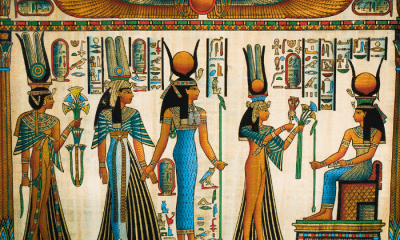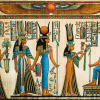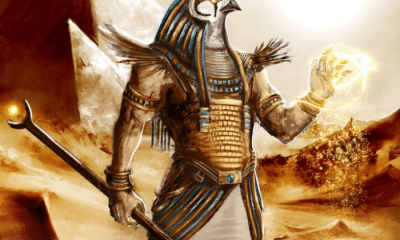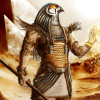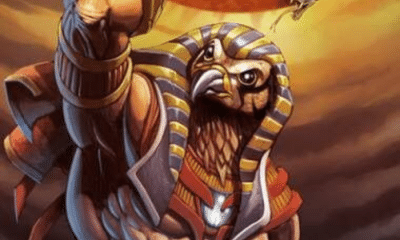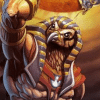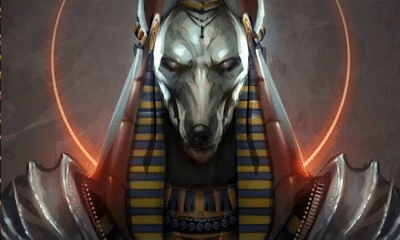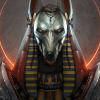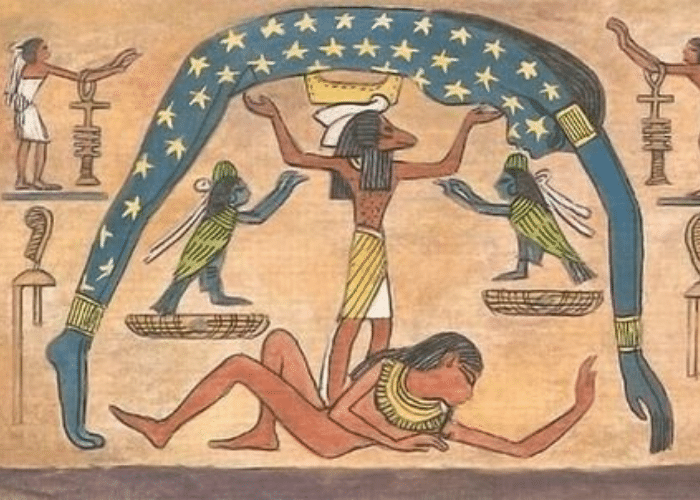
Egyptian
Geb: The Egyptian God of the Earth
Geb: The Egyptian God of the Earth
Most cultures see the earth as a nurturing, protective mother. The Egyptians, however, saw the ground beneath them as a largely disinterested father. Keep reading to learn about Geb, the Egyptian god of the earth!
Ancient Egypt was one of the few cultures that depicted the fertile earth as a male deity. In contrast to the Mother Earth archetype common around the world, Geb was the male god of the earth’s virility.
One of the principal gods of Heliopolis, Geb represented the land of Egypt itself. Though sometimes seen only as the god of the fertile Nile Valley, he had a broader role as the god of the entire landscape.
The unique geography and culture of Egypt meant that the earth was seen as both hostile and life-giving. While the valley produced enough food to feed an empire, it was boarded by a harsh desert that was associated with death.
The Egyptian view of the earth god was therefore a complex one. While Geb was a powerful source of authority and life, he was also a disinterested god who could destroy a mighty kingdom without a thought.
Geb and the Fertile Earth
Over the thousands of years that its culture flourished, ancient Egyptian mythology often included different legends, gods, and interpretations of the world.
Many of the most well-known myths came from Heliopolis, an important ancient city on the site of modern-day Cairo. In ancient times, Heliopolis was a center of both political and religious power at different points in its history.
In the mythology of Heliopolis, a group of nine deities called the Ennead were the supreme beings. They were the creators of the world and everything that lived on it, including humankind, and were the first rulers of Egypt.
According to the creation myth from Heliopolis, an androgynous god called Atum emerged from the primordial waters. He created Shu, the god of the air, and Tefnut, the goddess of moisture.
Shu and Tefnut had two children as well. Geb and his sister Nut were born intertwined and resisted all efforts to separate them.
Geb was the god of the earth and Nut was the goddess of the sky. Together, they were powerful forces of creation.
Geb and Nut soon had four children of their own. Osiris, Set, Isis, and Nephthys were their sons and daughters.
Eventually, Shu was able to force his son and daughter apart. He placed himself between them, which is why the air fills the space between the earth and the sky.
Geb was often shown with his father and sister in art. He was depicted as a lounging male figure with his star-covered sister arched above him and his father keeping them apart.
In these images, Geb generally has dark green skin. He is the physical representation of the fertile land of the Nile Valley.
Originally, however, Geb represented the harsh desert as well as the arable land of Egypt. While later myths said that he created the desert as a barrier to keep Egypt safe, earlier legends sometimes claimed that he was connected to its dangers himself.
In this tradition, Geb is known as the father of snakes as well as of the gods. He is sometimes shown with a human body and the head of the snake to represent this connection.
More often, however, Geb was seen as a representation of the earth’s fertility. Barley grew from his ribs, stretching upward toward his wife.
As the god of the fertile earth, the Egyptians believed he represented the lands they lived in specifically. Geb’s role as the god of the Nile Valley was shown in how he divided himself between his heirs.
After Osirus’s death, Horus and Set argued over who would inherit his throne. While some legends had Horus defeating Set outright, others said that Geb stepped in and divided Upper and Lower Egypt between the two gods.
Egypt as a whole was sometimes called the House of Geb in recognition of both his position as the land itself and as the originator of kingship.
My Modern Interpretation
Egypt was one of only a handful of ancient societies to imagine the earth in a masculine form.
Most often, the land was seen as female. The things that grew from it were likened to a child growing within its mother, and the nourishing aspects of the earth’s produce also linked it to motherhood.
Geb, however, represented a reversal of this standard archetype. This may be because he was seen as an active figure in many more aspects of the earth than the traditional mother goddess.
Although he fed the people of Egypt and used the land to keep them safe, Geb was not necessarily a protective and nurturing deity. Many of the natural disasters ascribed to secondary gods in other religions were the result of Geb’s actions to the Egyptians.
His laughter, for example, produced earthquakes. He could cause droughts at will, limiting his own vegetive nature.
These actions were not the result of malice or anger, as they were sometimes portrayed in other traditions. Instead, Geb caused these events because he took little direct interest in the affairs of mankind.
Earthquakes, droughts, and other disasters of the earth were not due to Geb’s displeasure, in fact earthquakes came when he was at his happiest, but because the people affected by such events were simply beneath his notice.
This disinterest is likely the reason that Geb never had a temple dedicated in his honor at Heliopolis. Although he was one of the important gods of the Ennead, people believed there was no reason to appeal to him directly because he had so little concern for them.
In addition to representing some of its dangers, Geb also represented the landscape of the earth itself. Unlike some other earth deities, Geb formed the shape of the earth instead of its features being added onto him by other means.
In Greek mythology, for example, many mountains were formed when the gods hurled rocks at their enemies or imprisoned them under Gaia’s surface. They were not a part of her being, but added onto her form.
Geb, however, personified the landscape as well as the earth’s fertility. He reclined with a bent knee and outstretched limbs that created the mountains, hills, valleys, and other features of the earth.
As the personification of the desert landscape, as well, Geb was associated with death as much as he was with life.
The bodies of the dead were not buried in the fertile ground to later renew it as they were in most other cultures. Instead, the Egyptians buried their dead in the harsh desert where they would remain for eternity.
Geb held those dead within himself indefinitely. In some traditions, he was seen as a psychopomp who helped guide the souls of these dead people to their final destination.
To reach the afterlife, however, the Egyptians believed that the body had to remain intact. While the desert held bodies, it could also uncover them.
Shifting sands and seismic activity could unearth bodies in the desert. Known as “Geb opening his jaws,” the exposure of a body could be seen as a sign that the dead person had been judged unworthy.
Geb could also imprison the souls of the dead within himself and refuse to allow them to move on. This punishment was one of the god’s most feared powers.
Because Geb played so many roles, he did not fit the mold of the fertility deity that personified the earth in many other cultures. Although he represented the fertile earth, Geb also represented kingship, the country, death, and natural disasters.
In Summary
In Egyptian mythology, Geb was the god of the earth. His belief was centered around Heliopolis, where he formed part of the creator god Ennead.
Geb and his sister, the sky goddess Nut, were the children of the primordial air god and his consort. Strongly attracted to each other, they had four children before their father was able to put himself between them.
Geb’s son Osirus became the first king of the land that his father personified. Egypt was the House of Geb, and kings remembered his ancestry in their rule.
While Geb’s green, grain-covered skin marked him as a god of the earth’s fertility, the Egyptians believed he played many other roles.
He represented the whole of the landscape. The contours of his body created the mountains and valleys of the earth.
He could create disasters with no thought for how they would affect humankind. Earthquakes, for example, were caused by his laughter.
Geb was also the desert, a harsh place that held Egypt’s dead. He could embrace, trap, or expel dead bodies.
Although he was an important god in Egyptian thought, Geb had no temple of his own or major cult. Unlike the Mother Earth archetype, he was seen as so disinterested and unaffected by the human race that they saw little point in appealing to him until after death.


